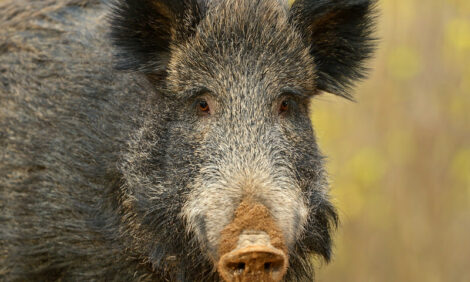



Weekly Overview: Two Months To Go: Is the EU Ready for the Sow Stall Ban?
ANALYSIS - With the partial sow stall ban in the EU now just two months away, the great majority of Danish sows is already loose-housed, according to the industry conference in Herning, Denmark, last week. As in the UK, Danish pig producers expressed concern that others in the EU will not comply with the legislation and they called on the EU not to allow derogation for those who do not meet the standards. The EU and US could be heading for another trade war, this time over the use of the beta-agonist, ractopamine, in feed for pigs, cattle and turkeys.The congress of the Danish pig industry was held in Herning last week. The nation's pig industry declared that all its farmers will be ready to implement the sow stall ban when it comes into operation on 1 January 2013.
The most recent estimate indicates that around 85 per cent of Danish producers are already keeping pregnant sows in group systems.
Of those who have not yet converted, a significant number are in the final stages of adapting their production to comply by the deadline date.
However, the Danish pig producers are concerned that others in the EU will not meet the demands of the legislation and they have called on the EU not to have a derogation for those who do not meet the standards.
Bigger falls in pig meat production than originally forecast are possible according to the latest BPEX report looking at the introduction of the partial sow stall ban across Europe on 1 January 2013.
This is the result of rocketing feed costs and could lead to a sharp rise in prices for pork and pork products.
The report shows 18 EU countries say they will be ready for the new legislation, though some still have a long way to go.
Also the Herning conference, an agreement was signed between pig producers, slaughterhouses and the food industry in Denmark to boost slaughter pig production and cut exports of piglets to Germany.
The European Union and US could be heading for another trade war, similar to the one it had over the use of growth hormones in beef cattle.
This time the row that is brewing is over the use of ractopamine - a beta-agonist - as a feed supplement, which is used for boosting growth and increasing leanness in pigs, cattle and turkeys.
The latest turn of events in this saga came last week, when the Council of the European Union published its official response to the decision by Codex Alimentarius to set maximum residue limits for ractopamine, thus endorsing its use.
The decision by Codex was taken after a majority vote by the member nations. The majority was two.
The European Union was angry at the Codex decision and the response by the council puts the EU on a collision course with countries such as the US and Canada, where the use of ractopamine is popular. Some estimates have the use in pig feed of between 60 and 80 per cent of the US herd.
During the Latin American Animal Nutrition Congress in Puerto Vallarta, Mexico last week, a new source for evaluating unconventional feed ingredients for all types of livestock was presented.
Valérie Heuzé of the project team said that Feedipedia is an open access information system on animal feed resources that provides information on the nature, occurrence, chemical composition, nutritional value, and guides for safe use on 1,500 feeds for a worldwide audience.








